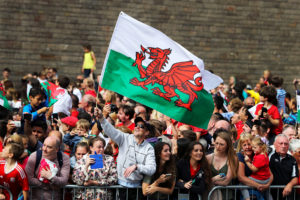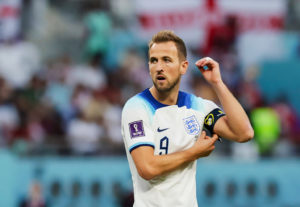In the popular imagination, the 1970 World Cup in Mexico still stands as the apogee of football. Broadcast in colour for the first time, it seemed the height of modernity: even the ball was named Telstar after the satellite that made global transmission possible. Brazil, who won their third World Cup in four, had been on a Nasa fitness training programme before the tournament — so when the Jornal do Brasil claimed that “Brazil’s victory with the ball compares with the conquest of the moon by the Americans” the year before, it didn’t seem wholly ridiculous.
The football they played in iridescent heat on sun-bleached grass that shimmered an unfamiliar green on television screens across the world; the patterns they had found in their vibrant yellow shirts had an artistry about them, a grace that enraptured the world. “Other teams thrill us and make us respect them,” wrote Hugh McIlvanney in the Observer. “The Brazilians at their finest gave us pleasure so natural and deep as to be a vivid physical experience.” Just as the moon landings had been a triumph of human ingenuity, so Brazil’s World Cup win seemed somehow transcendent, a celebration of the best of humanity.
At its heart was Pelé, born Edson Arantes do Nascimento. As a 17-year-old, he had scored twice in the 1958 final as Brazil won their first World Cup. In 1962, as Brazil won again, he had been injured early in the tournament. In 1966, brutal tackling had bullied him and Brazil out in the group stage. Disillusioned, he quit the national side but even after being coaxed back, there had been doubts as to whether he would make the squad in 1970 after the coach João Saldanha began to question his eyesight. But Saldanha was sacked on the eve of the tournament, Pelé was restored and, at 29, he enjoyed his apotheosis.
He scored in the final, a magnificently athletic header, but what is best remembered is his lay-off for the overlapping Carlos Alberto to make it 4-1 in the final seconds, a team goal of mesmerising fluency to crown the tournament. The pause, the timing, the awareness… This was football of the very highest level. Pelé had risen from horrendous poverty to become probably the most revered sportsman on the planet. He was painted by Andy Warhol, who commented that Pelé would have “15 centuries” of fame.
Pelé’s lob from the halfway line against Czechoslovakia; the header that drew the stunning save from Gordon Banks; the dummy on the Uruguay goalkeeper Ladislao Mazurkiewicz — none of them resulted in goals, but that seemed not to matter. This was about more than winning or losing, bureaucratic notches on a scoreboard. It was about the greater glory of being and the game. And there was even perhaps, for those minded to see it, in the famous photograph of him and Bobby Moore exchanging shirts after Brazil had beaten England, an image of racial harmony.
There has been a sense ever since of football trying to recapture the spirit of 1970. The more apt comparison from the previous year is perhaps less the moon landings than Woodstock, a festival of love and artistry that now embodies a moment of lost possibility with Pelé as its pregnant Joan Baez. And yet, like Woodstock, the idealised image of the 1970 World Cup was largely illusory.
The popular conception of Woodstock, great crowds revelling in the possibility of peace while listening to Jimi Hendrix and Creedence Clearwater Revival, stems largely from the over-idealised Michael Woodleigh documentary, released three months before the 1970 World Cup. In reality, it was chaos: several acts performed hours late, anarchists broke down a fence to admit thousands without paying, two people were killed (one run over by a tractor).
The 1970 World Cup, similarly, becomes a much darker event as soon as you peer beyond the brilliance of Brazil’s football. Mexico was ruled by the US-backed Partido Revolucionario Institucional, which was engaged in a constant war with Left-wing student and guerrilla groups. Torture and extrajudicial killings were commonplace: the World Cup fell between two massacres of student demonstrators by government forces, one in 1968 and one in 1971. Brazil itself was under a military dictatorship led by the hard-line General Emílio Médici (that Saldanha was an outspoken Leftist was one of the major reasons for his removal as coach). The World Cup success was, along with short-term economic growth, framed as part of the “Brazilian Miracle” he and his repressive policies had supposedly made possible. To call Pelé a stooge of the regime, as many have, or to criticise him for not speaking out, is perhaps unreasonable — but he was undeniably the face of a major propaganda success for Médici.
And yet, in World Cup terms, 1970 does represent an age of lost innocence. Football can be divided into two eras, ancient and modern, with the moment of transition falling in the mid-Sixties, when it became a game of systems rather than individuals. England won in 1966 because of their pressing and their revolutionary adoption of a rugged 4-4-2 formation. It was functional rather than spectacular and drew criticism from almost everybody (until it worked). Football as a romantic game was over. The 1970 tournament was celebrated as a brave new world of attacking potential; rather it was, even if Brazil were rather better organised than the samba cliché had it, a throwback to what had gone before because the heat and humidity of Mexico made the physical exertion demanded by a systematised game impossible.
But football was changing off the pitch as well as on it. Since 1961, the president of Fifa had been Stanley Rous, a former schoolteacher from Suffolk who had refereed the 1934 FA Cup final. He tended to work from home, making occasional flights to Fifa’s small office in Zurich, and was sceptical about expanding the game beyond its European and South American heartlands. He tried to ignore politics altogether, which in part explains the lack of qualms about the 1970 World Cup being played in Mexico.
That policy, though, never particularly practical, created two major problems. He opposed the ban that had been imposed on apartheid South Africa and then, in 1973, he refused to listen to Soviet protests against playing the second leg of their qualifying play-off against Chile in Santiago’s Estadio Nacional, which was being used as a torture and detention centre by the Pinochet regime after the coup against Salvador Allende.
His clumsy handling of both issues, allied to a perception he was an old-school British colonialist, led to Rous’s defeat in Fifa’s presidential elections shortly before the 1974 World Cup. The man who beat him was the Brazilian João Havelange, the son of an arms dealer who had been an Olympic swimmer. A year later, Havelange appointed as his technical director Sepp Blatter, a Swiss businessman who, while working for Longines, had the revelation that rather than the Olympics paying watch-manufacturers to use their timing apparatus, the watch-manufacturers should pay the Olympics for the exposure. This was a whole new world. The following year, Blatter completed the negotiation of a huge sponsorship deal with Coca-Cola. Football’s commercial age had begun.
Everything in football now is corporate. The ban on beer at the Qatar World Cup and Budweiser’s fury was a rare example of local culture winning out over commerce. And Pelé too was infected: from Puma to Snickers to Viagra to diamonds made by heating his hair under extreme pressure, there was nothing he wouldn’t advertise or monetise. Perhaps it is fitting that one of the last tweets posted from his official account was used to advertise his new clothing range.
Pelé was smooth and charming, a safe pair of hands. His 1970 teammate Tostão has a theory about the use of nicknames in Brazilian football, that the clamour around players makes it useful for stars to split themselves in two: the public figure (the nickname) and the private (the “real” name). For Pelé, he said, that divided self ceased to exist: the mask became the man. “He says that Edson is separate from Pelé, but I don’t see it,” he said in an interview with The Blizzard. “The only one that exists is the public Pelé. He adapted from the age of 15 to becoming a public figure. He passes the impression of never going through depression, anxiety, anguish, sadness as a consequence of loss of identity. He’s happy, well adapted. He’s always smiling and upbeat. You never see him bad tempered. He loves being Pelé.” Even when one of Pelé’s sons was admitted to a drug rehabilitation clinic, it became a public event, something of which Tostão was sharply critical. By coincidence (and it wasn’t planned; I was the editor), on the next page of the magazine was an advert for artwork signed and endorsed by Pelé.
Of course, plenty of people exploit their fame to make money. Nobody should criticise somebody who grew up in the poverty Pelé did for pursuing every opportunity they can. But that doesn’t mean that there cannot be sadness for what he became and what football has become. Amid the dictatorships, there was something beautiful about 1970. The feelings of wonder Brazil and Pelé evoked at the time were not fake, nor should they be invalidated by context: art can flourish in the most brutal of places.
But equally it’s impossible now not to look back at that tournament and see what might have been for football. Perhaps an increased level of tactical complexity was inevitable; it is probably desirable even if it complicates the simple tales of heroes and villains that many still desire. Increasing commercialism was probably also inevitable and has arguably in some ways been beneficial — but, still, in the silent pause before Pelé’s lay-off to Carlos Alberto, in that moment of perfect stillness, there is a glimpse of a better world.
Disclaimer
Some of the posts we share are controversial and we do not necessarily agree with them in the whole extend. Sometimes we agree with the content or part of it but we do not agree with the narration or language. Nevertheless we find them somehow interesting, valuable and/or informative or we share them, because we strongly believe in freedom of speech, free press and journalism. We strongly encourage you to have a critical approach to all the content, do your own research and analysis to build your own opinion.
We would be glad to have your feedback.
Source: UnHerd Read the original article here: https://unherd.com/



